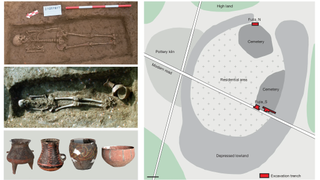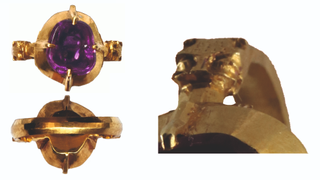
Kristina Killgrove
Kristina Killgrove is a staff writer at Live Science with a focus on archaeology and paleoanthropology news. Her articles have also appeared in venues such as Forbes, Smithsonian, and Mental Floss. Kristina holds a Ph.D. in biological anthropology and an M.A. in classical archaeology from the University of North Carolina, as well as a B.A. in Latin from the University of Virginia, and she was formerly a university professor and researcher. She has received awards from the Society for American Archaeology and the American Anthropological Association for her science writing.
Latest articles by Kristina Killgrove
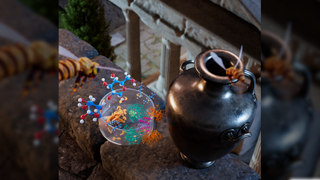
Sticky goo in 2,500-year-old bronze jars finally identified, settling 70-year debate
By Kristina Killgrove published
A cutting-edge chemical analysis of a mystery substance that had stymied experts for 70 years finally revealed its identity.
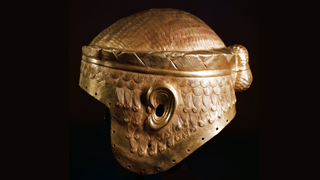
Meskalamdug's Helmet: One of the world's oldest helmets depicts a Mesopotamian prince's man bun
By Kristina Killgrove published
This 15-karat gold helmet was discovered in a royal tomb at Ur, but it may only have been worn for ceremonial purposes.

Ancient DNA suggests ancestors of Estonians, Finns and Hungarians lived in Siberia 4,500 years ago
By Kristina Killgrove published
A study of genomes from ancient Siberian people shows genetic linkages with people living in Estonia, Finland and Hungary today.
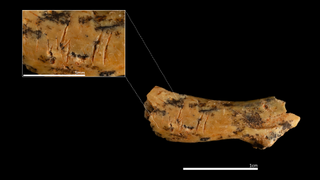
Ancient human relative cannibalized toddlers, 850,000-year-old neck bone reveals
By Kristina Killgrove published
Cut marks on a child's cervical vertebra found at Atapuerca in Spain suggests Homo antecessor was indiscriminate about cannibalism victims.

Embattled 'arsenic life' paper retracted by journal Science 15 years after publication
By Kristina Killgrove published
A controversial 2010 study that suggested bacteria could grow using arsenic instead of phosphorus has been retracted by the research journal Science.
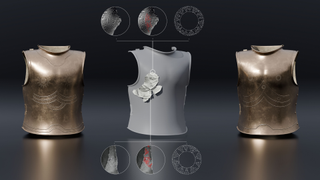
'Extremely rare' bronze armor found in Czech Republic dates to Trojan War era
By Kristina Killgrove published
Ancient metal artifact discovered in the Czech Republic is a rare example of bronze armor from the Trojan War era.
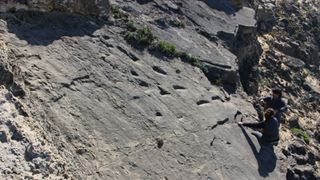
78,000-year-old footprints from Neanderthal man, child and toddler discovered on beach in Portugal
By Kristina Killgrove published
A Neanderthal trackway discovered in Portugal shows how an adult male and two children hunted for food 78,000 years ago.
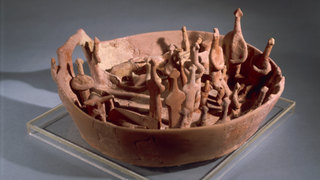
Vounous Bowl: A 4,000-year-old basin holding 4 miniature cows and 18 people — that was buried for mysterious reasons in a Bronze Age tomb in Cyprus
By Kristina Killgrove published
Experts have debated the meaning of this tomb offering for decades but generally agree it depicts some sort of ceremony or ritual.
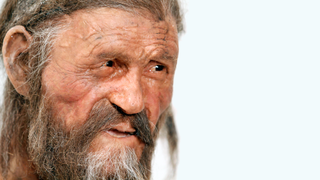
Ötzi the Iceman and his neighbors had totally different ancestries, ancient DNA study finds
By Kristina Killgrove published
A study of prehistoric skeletons from the Italian Alps shows that society may have been organized around fathers and that Ötzi the Iceman had a unique family lineage.
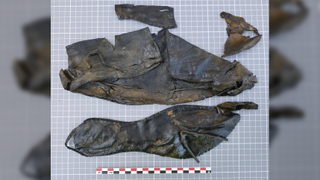
Thousands of leather shoes, bags and sword scabbards discovered during dig in medieval harbor in Norway
By Kristina Killgrove published
Thousands of pieces of leather discovered in an Oslo harbor are giving archaeologists insight into everyday life in medieval Norway.
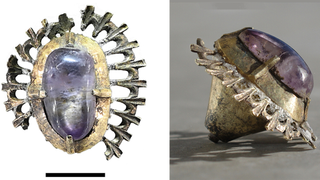
600-year-old amethyst 'worthy of a duke' found in medieval castle moat in Poland
By Kristina Killgrove published
The amethyst was set in high-quality silver and probably once formed part of a brooch.
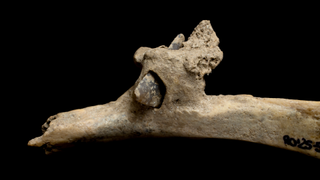
4,000-year-old human rib discovered high in the Pyrenees still has an arrowhead from a brutal attack
By Kristina Killgrove published
A human rib discovered high in the Pyrenees suggests that someone survived a shot in the back several millennia ago.
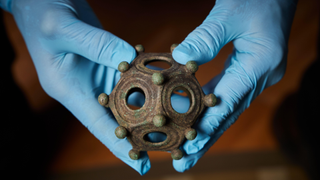
Roman dodecahedron: A mysterious 12-sided object that has baffled archaeologists for centuries
By Kristina Killgrove published
There are more than 50 theories for the function of this 12-sided, pentagonal-faced bronze object — but archaeologists have never quite figured it out.

Penguin Vessel: 1,600-year-old Nazca depiction of a cold-water Humboldt penguin that lives in tropical Peru
By Kristina Killgrove published
A rare penguin-shaped pot reveals the Nazca's interest in depicting the wildlife around them.

Neanderthal DNA may refute 65,000-year-old date for human occupation in Australia, but not all experts are convinced
By Kristina Killgrove published
A new DNA model suggests humans didn't reach Australia until 50,000 years ago, but archaeological data disagrees.
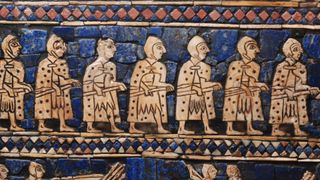
Mesopotamia quiz: Test your knowledge about the ancient civilizations of the Fertile Crescent
By Kristina Killgrove published
Are you as assured as Ashurbanipal about your knowledge of Mesopotamia, or as dim as Nimrud?
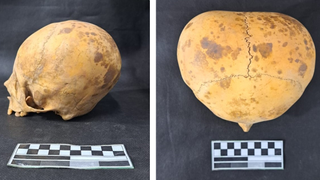
'Alien' skull of toddler is actually evidence of long-standing practice of head shaping
By Kristina Killgrove published
Workers digging a pipeline in Argentina found the flattened skull of an ancient toddler, raising questions about its asymmetrical shape.

8 ancient Roman shoes of 'exceptional size' discovered at Roman fort near Hadrian's Wall
By Kristina Killgrove published
Eight XXL leather shoes have been recovered from Magna, a Roman-era fort along Hadrian's Wall.

Monomachos Crown: The 1,000-year-old crown honoring 'the one who fights alone' found by a farmer in a field
By Kristina Killgrove published
One of only three surviving Byzantine crowns, it depicts a man and two sisters who jointly ruled the empire in the 11th century.
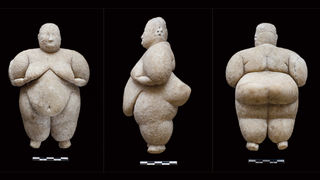
Ancient 'female-centered' society thrived 9,000 years ago in proto-city in Turkey
By Kristina Killgrove published
Genetic analysis of skeletons buried in a Neolithic proto-city in Turkey reveals that female lineages were important in early agricultural societies.
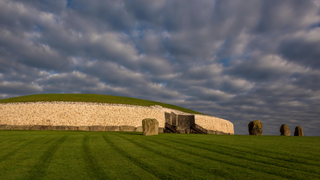
'God-king' born from incest in ancient Ireland wasn't a god or a king, new study finds
By Kristina Killgrove published
A closer look at the burial of a man born of incest 5,000 years ago reveals he was unlikely to have been a god-king.
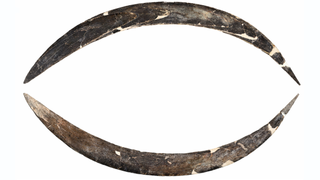
40,000-year-old mammoth tusk boomerang is oldest in Europe — and possibly the world
By Kristina Killgrove published
A new analysis of a carved mammoth tusk first discovered four decades ago reveals it may be the world's oldest boomerang.
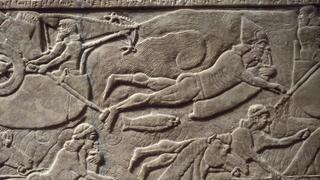
Assyrian swimmers: 2,900-year-old carving of soldiers using inflatable goat skins to cross a river
By Kristina Killgrove published
A carved panel found at Nimrud depicts Assyrian soldiers swimming across a river and using inflatable goat skins as floaties.
Get the world’s most fascinating discoveries delivered straight to your inbox.
